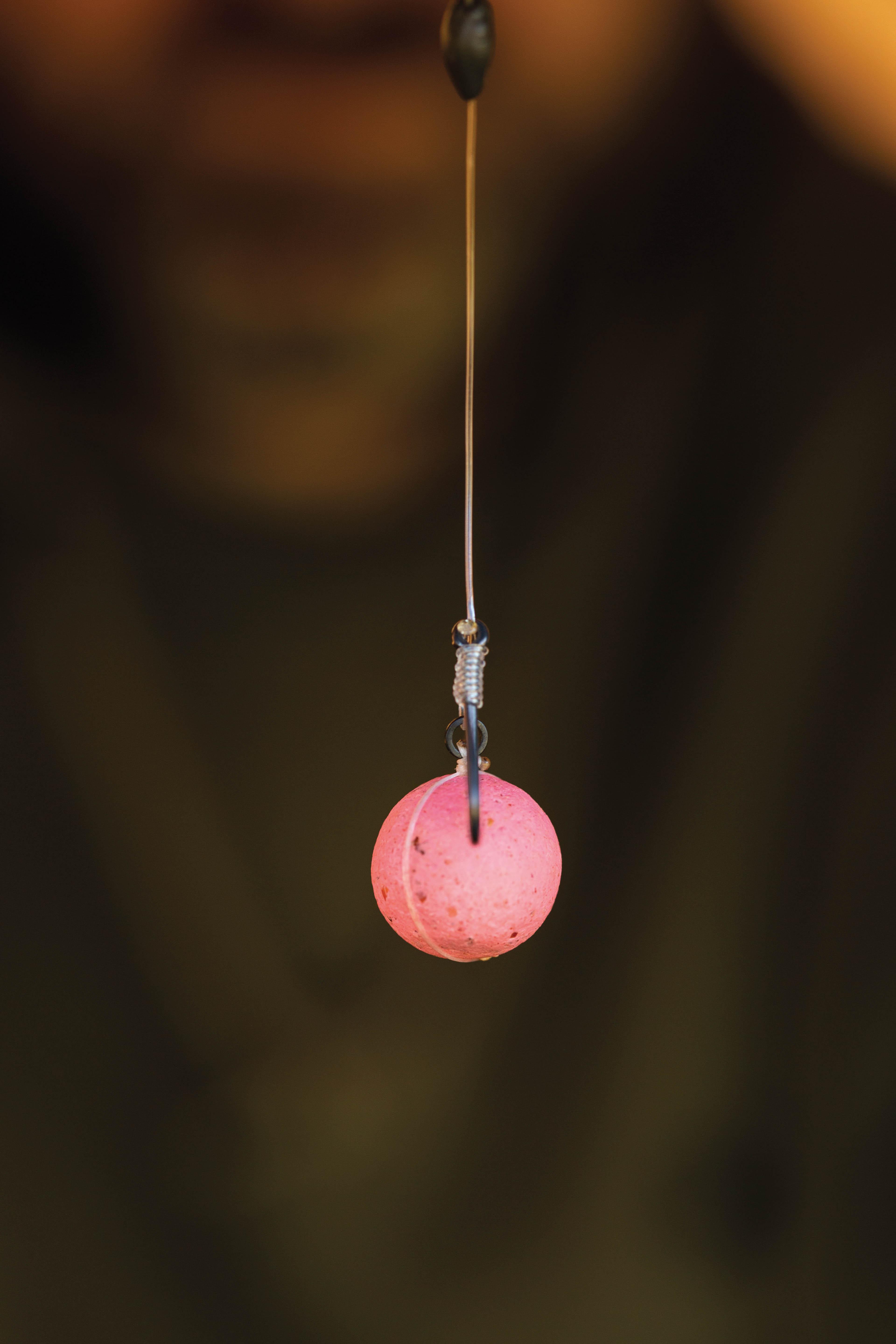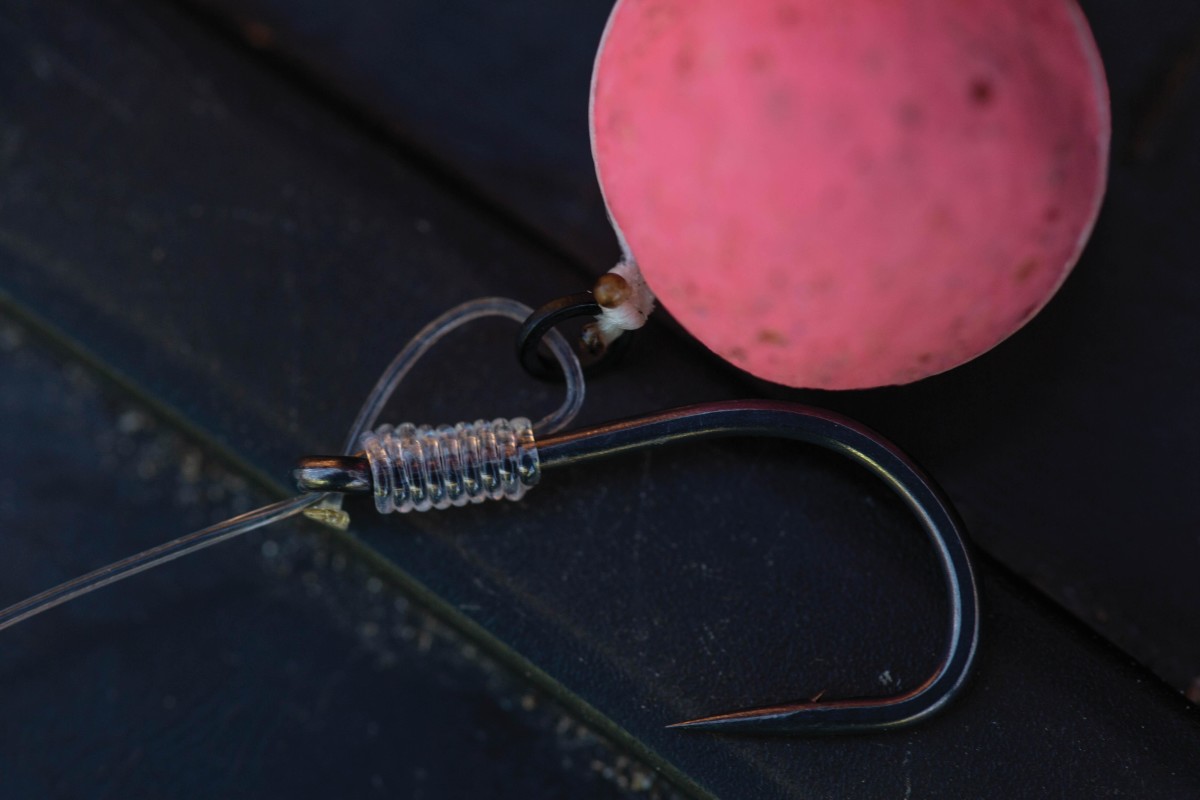
'God's Rig': The Terry Hearn Hinged Stiff Rig
Lewis Read tells you everything you need to know about Tel’s rig of choice, and explains exactly how to tie it
I sometimes ponder whether any rig since the original Hair Rig, has had a similar impact as the Hinged Stiff Rig. Personally speaking, I very much doubt it…
If the (big) carp in a water eat boilies, then this rig offers a pop-up presentation which is largely unequalled when it comes to presenting hookbaits two- or three-inches off the bottom. Whereas the Ronnie/Spinner, Multi and 360º Rigs are all exceptional low pop-up presentations, the Hinge… well, that is really something very special indeed, with all the key characteristics working truly synergistically, and in a way which exceeds that of any single part of the rig’s design.
With the passage of time, there have been numerous evolutions and ‘special’ variants, most of which still work well. How can they fail? The basis for the original concept remains so robust and effective, that it takes a lot to cock it up! Luckily, there’s no way I can realistically cover all the ‘ground-breaking’ variants here either:… all those versions that feature minor adaptations on how the hookbait is mounted or utilise different lengths or material for the boom. These adjustments are inconsequential in a broad overview of the rig. Instead, for this piece, I will focus largely on the classic Hinged Stiff Rig, and perhaps briefly mention the tried-and-tested options, and when to use them.
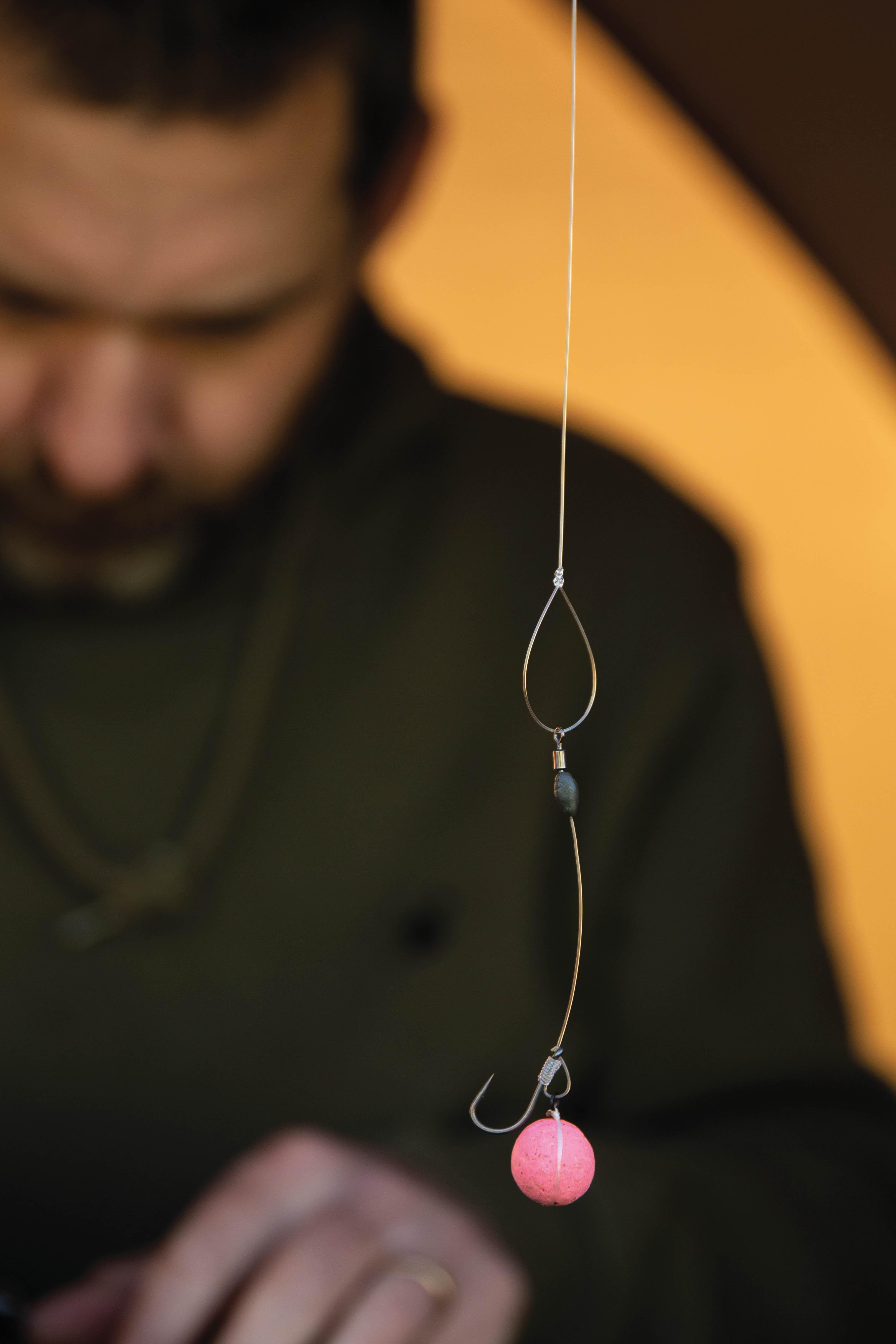
REVOLUTIONARY
Yes, I admit that I used a truly awful word in the first paragraph, one which is right up there with the most trite in the English language, but ‘synergistically’ is the only word I know which entirely describes how the key characteristics of the rig work together so perfectly. ‘Harmoniously’ comes close, but it is less descriptive of a rig’s mechanics than it is a nineties brand of hair spray.
The manner in which the D-mounted hook pivots and presents the point onto the bottom lip, the way the hook section rotates, the manner in which the balanced rig can lift with free movement—especially when afforded this free movement by looped booms—without having excessive slack, and how the rig as a whole is tangle-free and resets, make it almost perfect! Can you tell that I’m a big fan yet?
The hook section itself, to my mind, offers the perfect balance between refinement, and the crudity dictated by use of high-memory stiff materials like Recoil. Using a good quality cork-balled pop-up that is so vital for the mechanics of the rig, means that you are able to balance the sink rate of the hook section, whilst ensuring the hook section sits upright for the full duration of time that the hookbait is out there fishing.
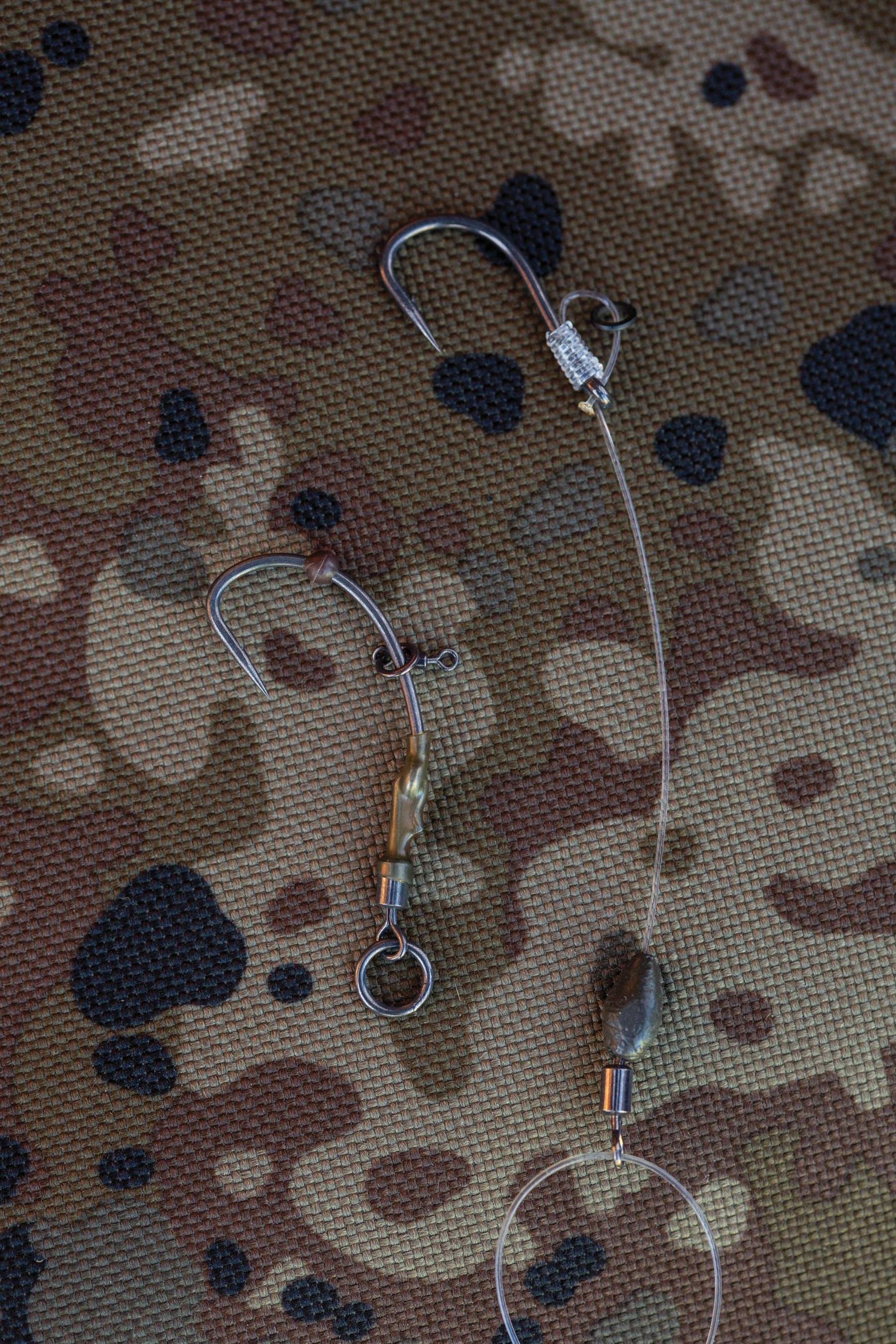
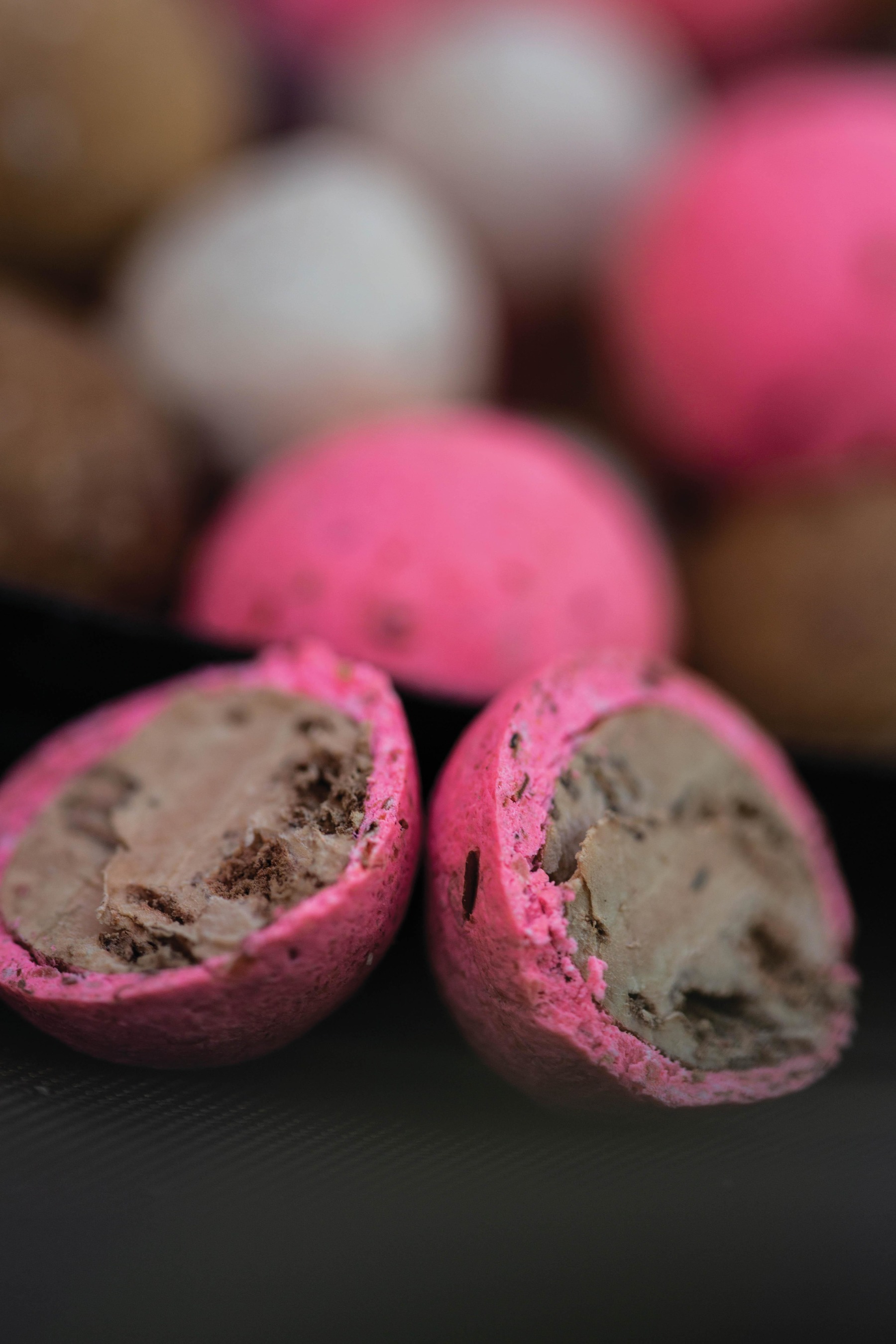
At risk of repeating myself ad nauseam, if you use standard shop-bought pop-ups with the classic Hinged or Chod Rig, the hook section will not function properly because it will end up leaning over. This will stop it from rotating freely, which will cause poor hook-holds and inevitable hook-pulls.
Over the years, I have experimented, using hinge points at the bottom of the hook section (top of the hook section swivel), and have found that with standard Hinged Stiff Rig heights, a rigid connection—created by a simple blobbed Blood knot—is most consistent. But when going lower or using a more curved hook section, the additional movement seems to allow it to continue to work very effectively indeed.
Whilst on the topic of knotting the hook section to the swivel, I must mention one other personal little invariable tweak to the luscious, gently curved hook section, and that is to manipulate the line so that it exits the knot at a slight angle, the hook point sitting in near perfect alignment with the rotational axis of the PTFE swivel. These may seem like small details, but anything you can do to ensure that the hook section rotates freely on that axis will unequivocally be beneficial.
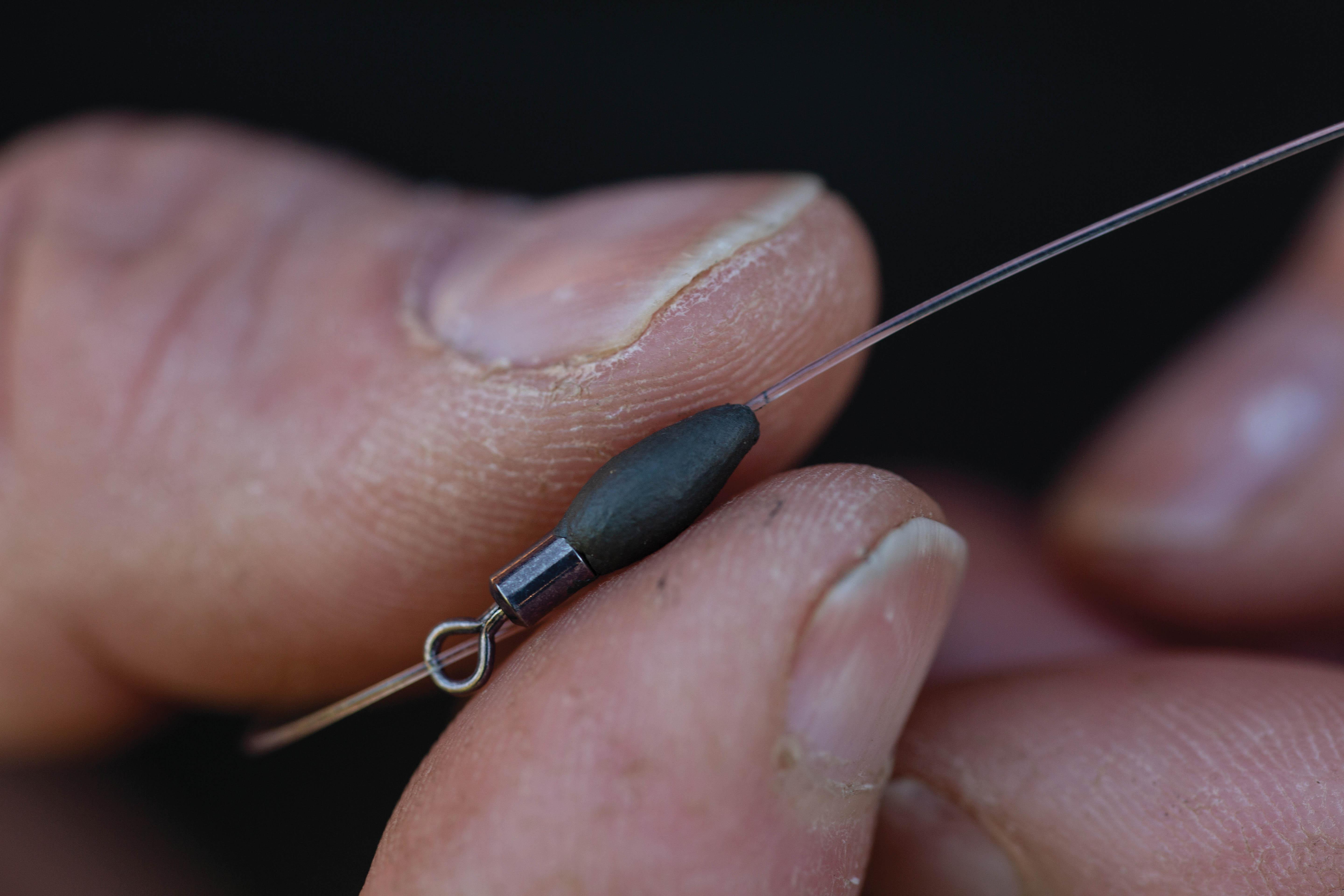
I’ve seen some hideous examples of curved hook sections… some clawed right over! The classic presentation features a lovely, natural-flowing sweep, which when combined with a tidy (small) tear-dropped ‘D’ on the back of the hook, sees the hook sit up proudly. This is an important consideration. Whilst the D-Rig can benefit from a slightly larger D to aid separation, large Ds on pop-up rigs end up looking horrendous, the hook being extremely obvious as it hangs from the bottom.
I still prefer tying hooks on using the tricky-to-tie Domhoff whipping, because the stiff hooklink material exits the hook straight when it is bedded down nicely. In reality, the Domhoff can be a total nightmare to learn, and truthfully, the Knotless Knot is arguably stronger. As long as you counter the angle the hooklink leaves the eye with the Knotless Knot by straightening it with the tag that forms the D, then the difference is only very slight. Oh, and please don’t forget to make sure your D is perpendicular to the hook, and that the hook section is in perfect alignment with the hook shank.
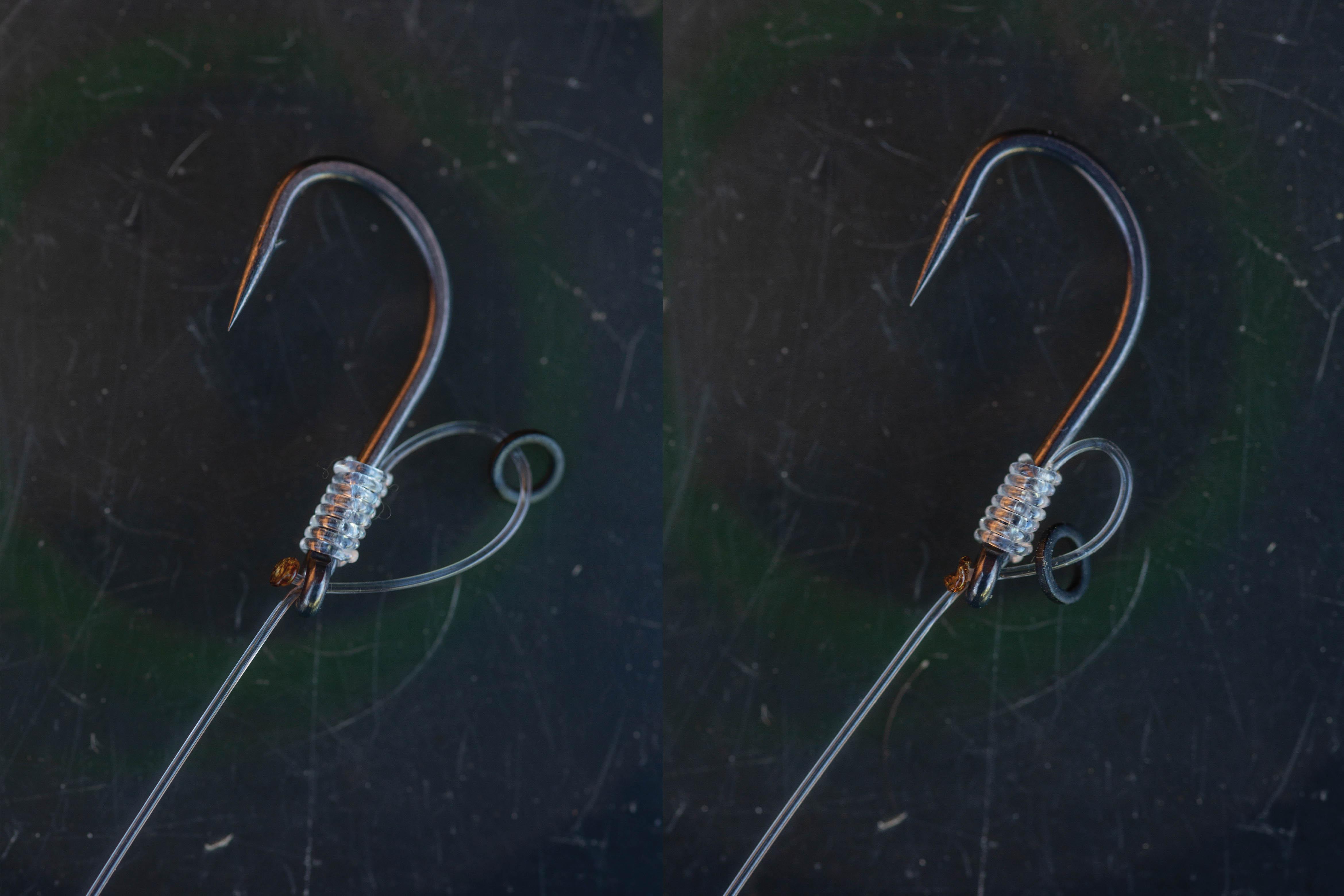
Decisions on boom and hooklink type, inevitably impact on choice of lead arrangement, and are dictated by substrate characteristics and the presence of weed. If there is low weed, I’ll happily fish a lead clip with a long, soft boom, tied with either our lovely Tungskin or Camsoft coated hooklinks, and tied ‘Metal-Micky’ style using ring swivels instead of loops, making it all very easy.
If the rigs are being cast onto clear spots and lakebeds, then its helis all the way for me! When tied properly with lovely looped heavy monofilament (fluorocarbon or copolymer) booms, the rig truly comes into its own. Loops with plain swivels mean that there’s plenty of movement and no jangling of unnecessary rings. Rings on loops just make no sense in my book; they create more problems than they solve, and bring tangles.
For me, the ideal loop at the hook section is about three quarters of an inch—that’s two centimetres for the nippers!—and formed using the wonderfully named Improved Rapala Loop knot. Look it up on the good old interweb, as there are loads of instructional videos and step-by-step guides that will help you learn how to tie it. If I’m being honest, I tend to just tie a Figure-Of-Eight Loop knot at the lead end of the boom—unless I’m expecting a rig inspection by someone really important that is!
Keep those hooks sharp, your hookbaits buoyant and the rigs tidy, and this is one rig which will not fail you when the chips are down. God’s rig: it’s the dog’s doodahs!
